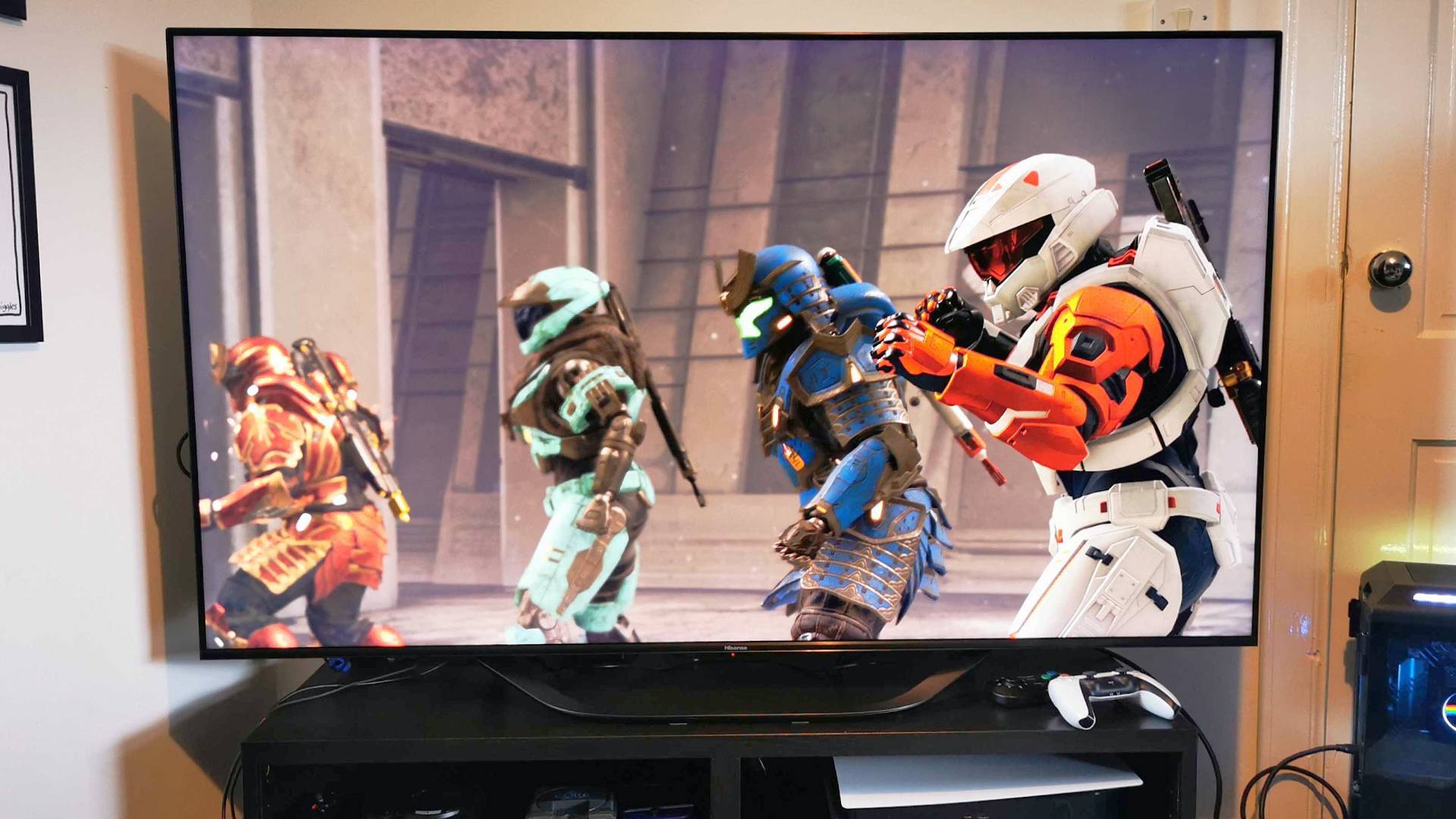GamesRadar+ Verdict
The Hisense U7K is a fantastically fast TV that brings 144Hz to the living room for less. Its mini LED also does an admiral job providing decent contrast and color accuracy, and it's super bright to boot. It isn't quite on the same level as OLED when it comes to movies and other entertainment, but if you're looking for a huge monitor alternative for your gaming PC, the U7K more than has you covered.
Pros
- +
Speedy 144Hz refresh rate
- +
Great gaming options
- +
Super bright
Cons
- -
Movies and shows can look a tad washed out
- -
HDR doesn't always produce best results
Why you can trust GamesRadar+
I often joke about how modern TVs are effectively just big monitors, but testing the Hisense U7K for review has me convinced that’s becoming the case. The manufacturer’s mid-range mini LED contender invades the PC screen space with a 144Hz refresh rate and an arsenal of gaming features that’d put some desktop screens to shame, all while managing to still retain its living room entertainment badge. While it does admittedly come with some screen tech shortfalls on the color and contrast front, there’s plenty to like about this affordable panel.
Before getting hold of the Hisense U7K, I’d sort of made peace with slower refresh rates within the best gaming TV space. After all, why would you need a 144Hz display for your living room when the PS5 and Xbox Series X cap out at 120Hz? Well, not to play devil’s advocate, but I’ve been holding out for a faster display that can help my gaming PC flourish, and Hisense’s new screen does just that. Not that I’m going to abandon my desk immediately and start playing all my Steam games on the couch, as that’d put my Steam Deck out of a job, but I’m totally here for gaming monitor specs making their way to other rooms.
It’s worth noting that the Hisense U7K isn’t the only 144Hz big screen out there, as the Samsung S90C OLED provides the same refresh rate. However, the latter costs over $200 more, whereas Hisense’s mini LED alternative manages to pack similar performance into a 65-inch package for just over the $1,000 mark. That’s arguably exceptional value considering its PC gaming prowess, and I reckon some of you might actually consider it over a similarly priced monitor.
Specs
I’ve already rambled on about the Hisense UK7 144Hz capabilities, but there’s plenty more to discuss in terms of specs. Coming in at $1,049.99 for the 65-inch version, this 4K mini LED panel comes armed with HDR10+ support and Variable Refresh Rate abilities. VRR in particular is extremely valuable given the high refresh rate involved and the fact most players will likely pair it with a PS5.
On the IO side of things, the UK7 wields four HDMI ports (two of which are HDMI 2.1), two USB ports, digital audio in/out, a headphone jack, and ethernet. It’s also got WiFi 6E connectivity built-in, just in case you’re planning on actually using it as a smart TV (what a ludicrous idea).
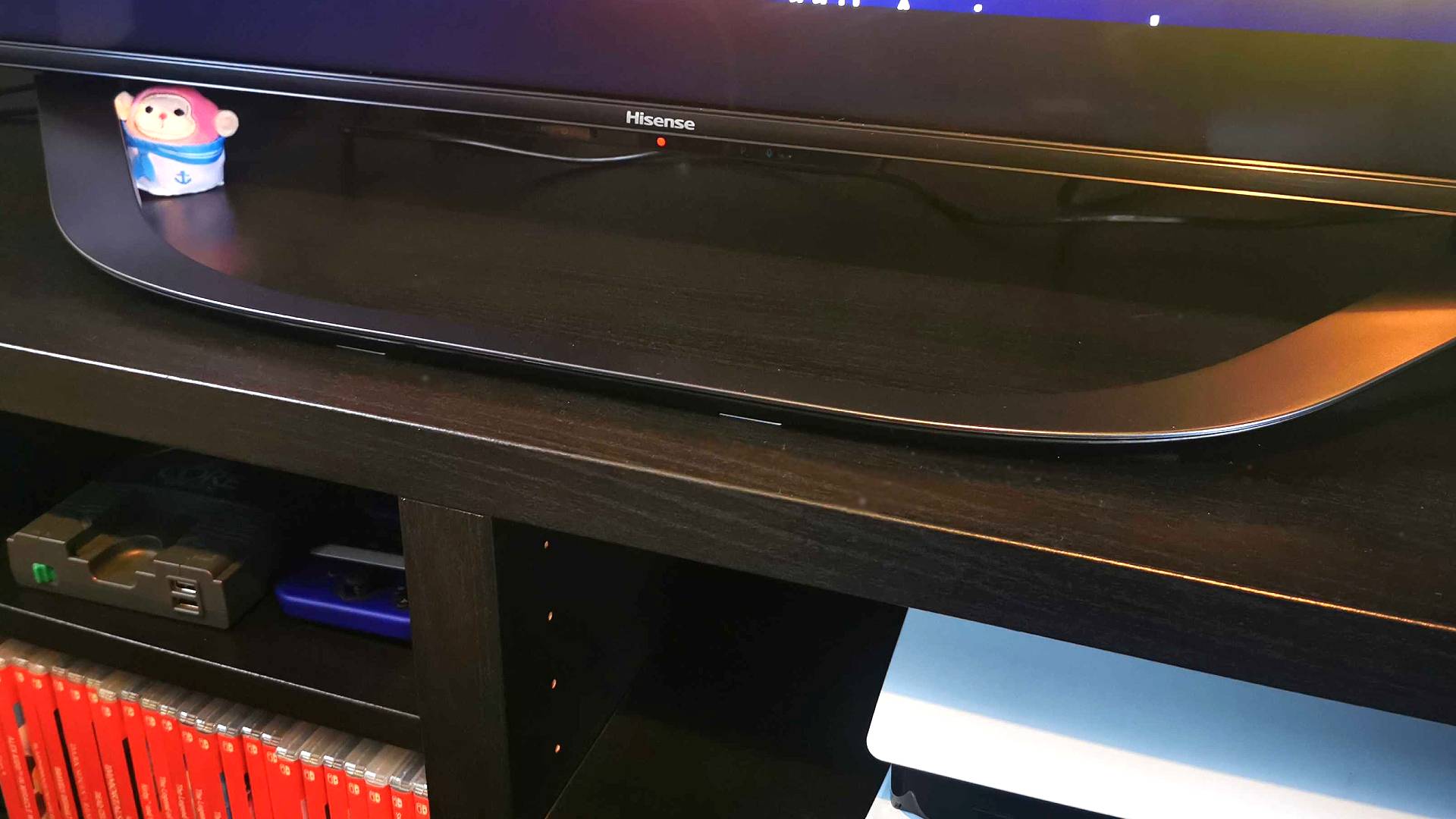
Design
With TV bezels becoming a thing of the past, it might feel like there’s less to talk about when it comes to display design. Yet, Hisense still manages to help its 65-inch model look the part by blending plastics and metal together in a pleasing rectangular symphony. This approach gives the mid-range screen a premium vibe, which I always appreciate compared to being hit with that “you get what you pay for” gut punch.
Round the back is a pretty standard affair, with a hump at the bottom serving as a place for the U7K’s innards. There’s a smaller patch of ports (Ethernet, optical, and a USB port) that actually live on the left-hand side of the rear, but everything else deserving of your attention lives within a divot at the side. That’s a blessing because if you’ve ever owned a big screen with a back-facing IO, you’ll know the pain of trying to shimmy it around just enough to plug something in without toppling it over.
On that note, the Hisense U7K features a center stand rather than feet at each side, and again, I’m extremely grateful for that design choice. I’m not particularly against snazzy-looking feet, as they free up space for a soundbar underneath, but I doubt it would have fit on my Ikea unit otherwise. So, if like me you’ve got Swedish furniture in your living space, you can rest assured that it’ll probably fit on your TV bench. The stand itself is pretty in its own way, consisting of a minimalist C shape frame that’s both unobtrusive and sturdy, the center providing a potential place to sit controllers, remotes, and other bobbins you may have lying around.
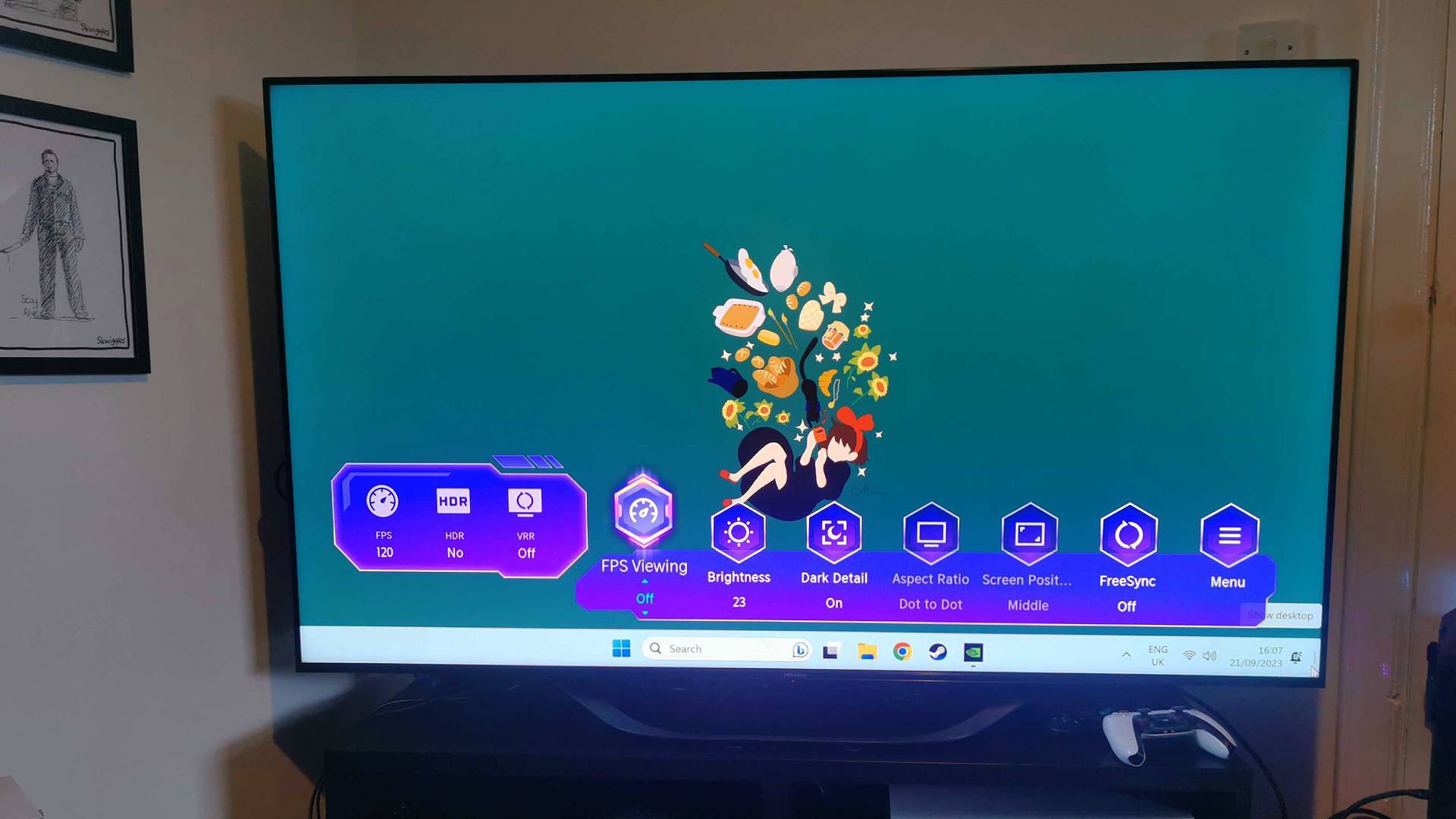
Features
I usually have a chuckle to myself when using the term ‘gaming TV’, but the Hisense UK7 packs features that are deserving of that title. I’m talking about a whole separate ‘Game Bar’ menu dedicated to settings that cater to consoles and PCs, which is handy given that there are so many of them.
Upfront on that same menu is a refresh rate toggle with 120Hz and 144Hz options, followed by an HDR and VRR toggle. I’ve got zero tolerance when it comes to messing around in vast, complicated menus, so I really appreciate being able to access those features with the push of a button. Other quick functions include a ‘Dark Detail’ toggle (handy if you’re struggling with murky in-game lighting) and an AMD FreeSync toggle for when there’s a PC involved.
Pivoting away from gaming for just a second, it feels only right to cover some of the Hisense U7K’s native smart TV abilities. The review model I’m testing is powered by the company’s own Vidaa software, but you’ll have access to a Google TV version in the US. I’m a big fan of the former’s Android platform, but Vidaa is a pretty good alternative that offers quick, easy access to streaming services and other apps. More importantly, navigation is snappy, and if you can’t be bothered with buttons, the remote has Alexa-powered voice control.
On that note, the remote is pretty typical but packs everything you could possibly need within reach of your thumb. If you’re a fan of dedicated streaming service buttons, you’ll find a nice cluster down the bottom, and a singular menu button will chuck you straight into the main settings hub and ensemble of gaming options. I’d say the remote is ‘no thrills’, but that’s probably the way it should be given that another platform will likely wield command over your setup, like a console, PC, or existing smart device.
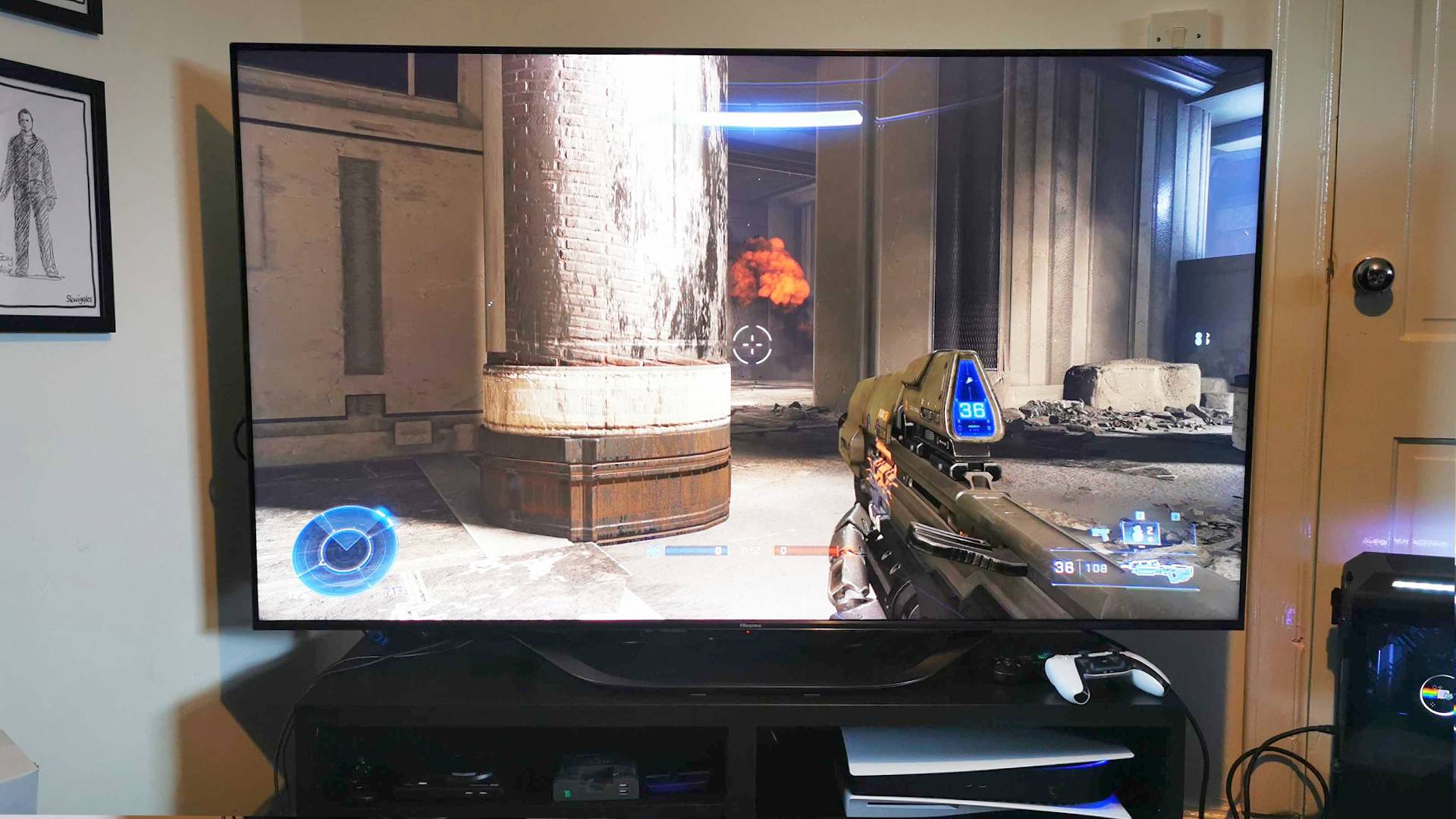
Performance
Sorry not sorry for repeating myself, but the Hisense U7K almost feels like a big gaming monitor rather than a conventional TV, and its performance hammers home that fact. This screen is begging to be paired with a PC, and it really struts its stuff while displaying Steam games. Naturally, the PS5 also makes full use of this punchy panel, but there’s something to be said about taking full advantage of a 65-inch 144Hz display.
To let the U7K fully spread its wings, I introduced it to my RTX 4080 rig and the usual collection of benchmark games. As ironic as it sounds, I don’t own a fancy gaming TV, so my previous living room gaming PC endeavours have been held back by 60Hz shenanigans and slower response times. So, it’s needless to say that the jump to 144Hz feels massive, with shooters like Halo Infinite and Overwatch 2 feeling so much slicker than they did before.
As a monitor reviewer, I’m used to faster refresh rate screens coming with caveats, and I expected as much with the Hisense U7K. Yet, I actually didn’t notice anything particularly lacklustre, as the display produced bright, vibrant results throughout testing. At least that’s the experience when gaming, as the U7K’s mini LED panel helps big adventures like Starfield and Baldur’s Gate 3 pop. I’d prefer to play both at my desk using a mouse and keyboard, but this TV is slowly convincing me to migrate permanently to the living room for my next visit to Faerun.
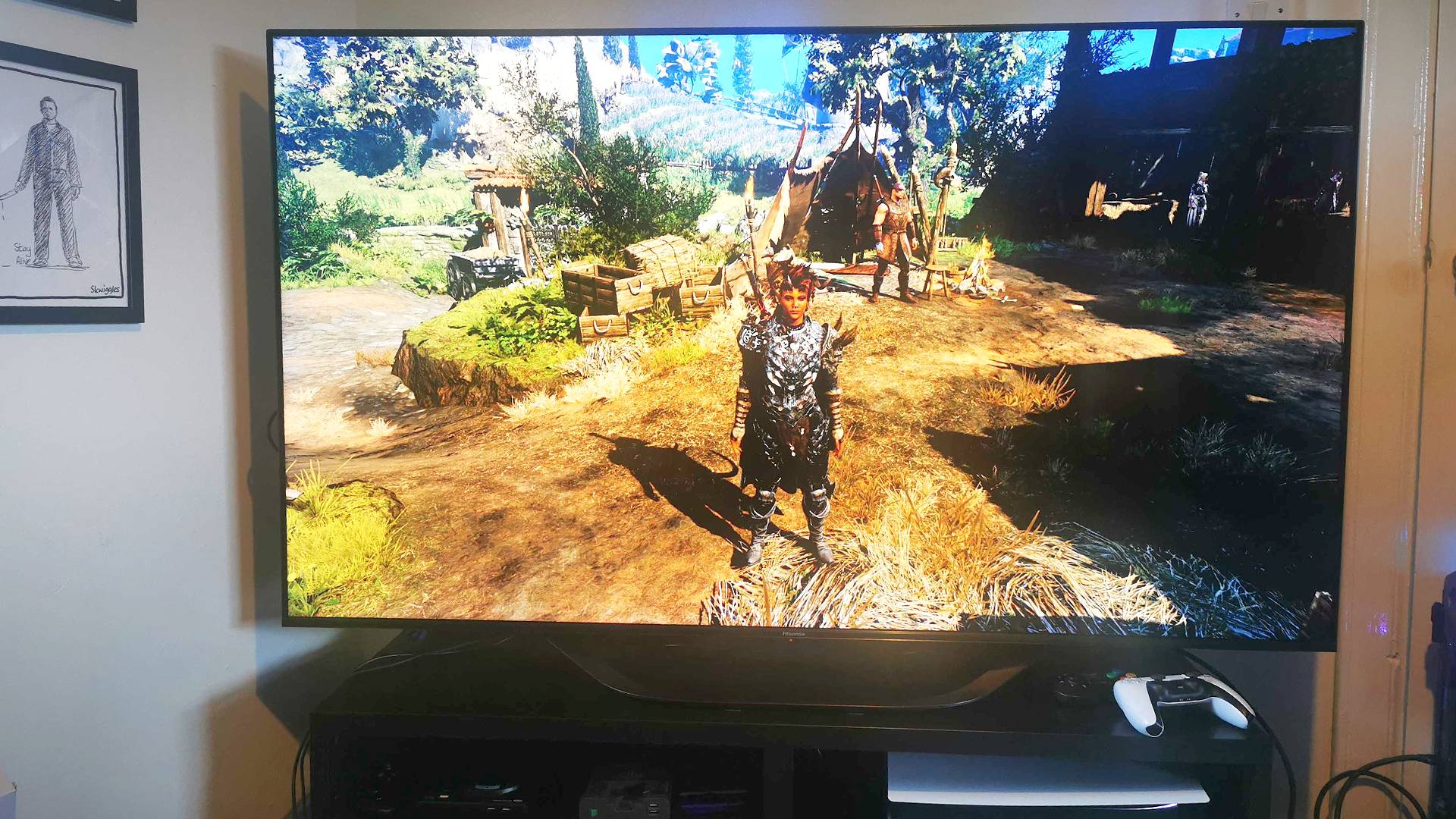
Of course, this TV also has a 120Hz mode, enabling the PS5 to reach its full performance potential. So, if you’re an Overwatch 2 console player, you’ll still feel the benefits of higher refresh rates. Naturally, that means it’s in with a chance of becoming the best TV for PS5 and Xbox Series X, even if I’m personally more excited at the prospect of it being a big PC screen. The fact the set is equipped with two HDMI 2.1 ports means you’ll be able to hook up both platforms in any case, which is what I’d personally do if I owned this specific model.
For funsies, I decided to try out some Sega Mega Drive Mini games on this big screen, and it really proved its worth as a retro gaming display. Classics like Sonic Spinball look phenomenal on this mini LED panel, providing punchy pixel visuals and brilliant colors. As a bit of a purist, nothing will beat an old-fashioned CRT and scart, but if you’re looking for a reliable portal to bygone retro memories, the Hisense plays pretty nicely with plug-and-play consoles, not to mention there’s no notable lag.
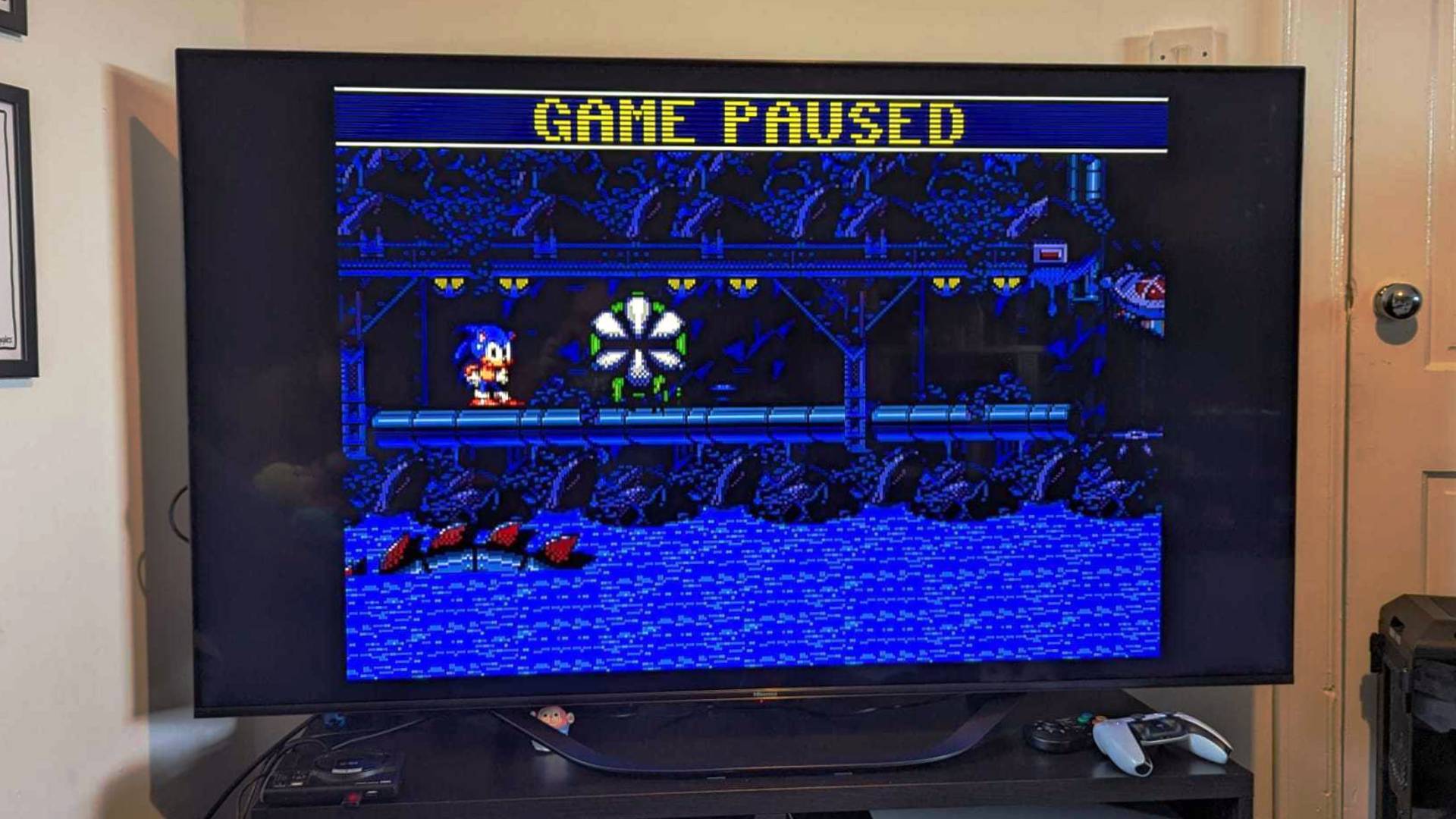
The experience wasn’t a visual disaster by any means, but everything felt a tad more washed out compared to what I was expecting, especially given the vibrancy while gaming. Still, compared to the older LED Samsung set I own, it still delivered decent image quality at 4K, even if it isn’t really a patch on OLED.
I’ve used quite a few OLED TVs in my time, so I know what to expect when watching some of my favorite movies and shows. I had the pleasure of receiving the Hisense U7K for review just as the new Star Wars series Ahsoka landed on Disney+, but the TV’s contrast and colors with HDR switched on sort of let the side down. The experience wasn’t a visual disaster by any means, but everything felt a tad more washed out compared to what I was expecting, especially given the vibrancy while gaming.
Swinging back to a more positive note, I was thoroughly impressed with the Hisense U7K's integrated speakers. In fact, the built-in subwoofer tricked me into thinking someone was knocking on the door when it was actually just a thump happening somewhere in the background of Halo Infinite. The TV's Dolby Atmos support also provides some delightful Lightsabre sounds while watching Ahsoka, which almost makes up for some of the contrast issues mentioned above.
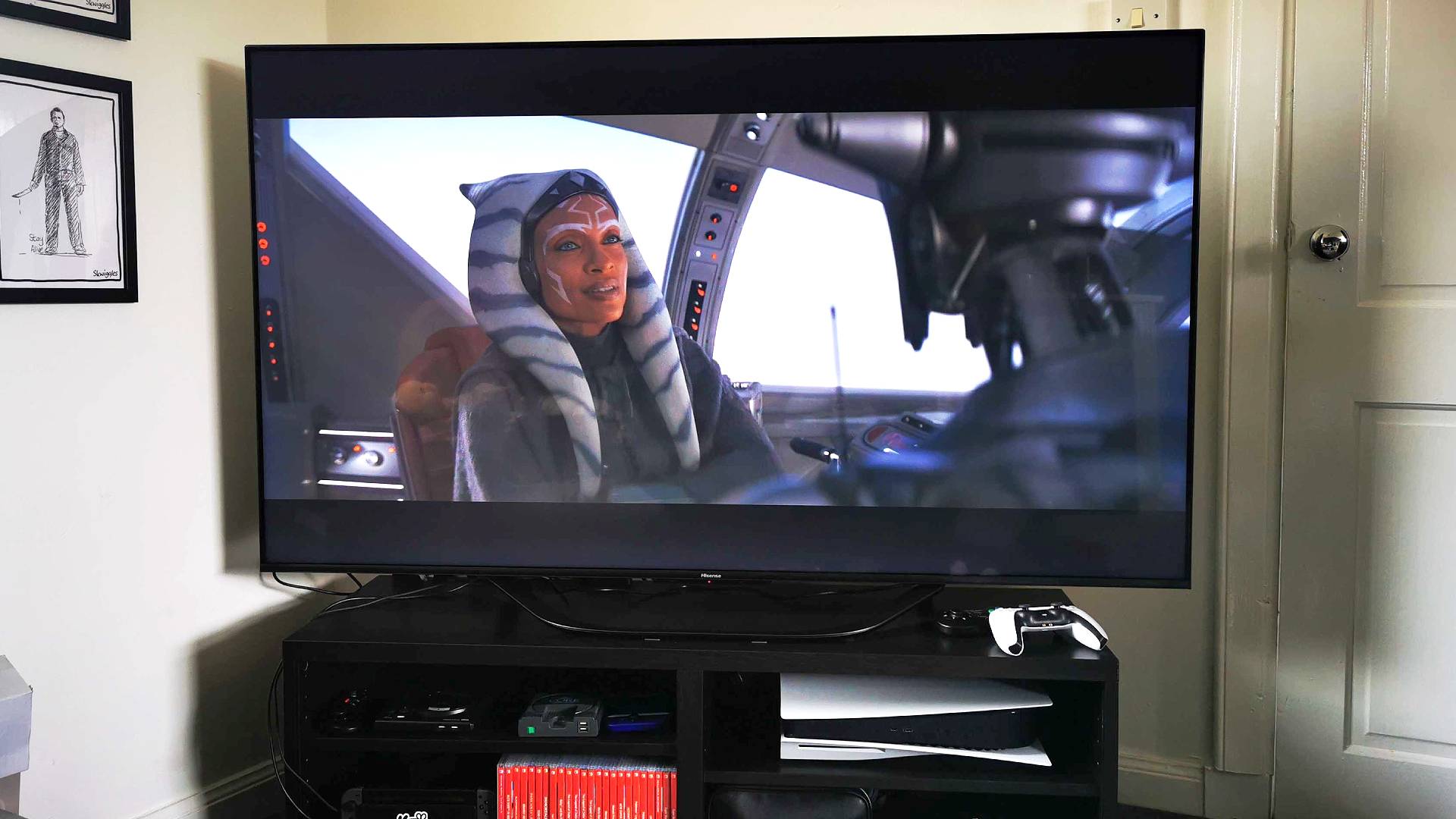
Should you buy the Hisense U7K?
It’s safe to say the Hisense U7K is one of the best midrange models to release in 2023, and it’s now my new favorite TV for PC gaming. It’s far from perfect, and movie lovers looking for superior contrast and black levels may want to consider similarly priced OLED alternatives instead.
However, if you play a lot of shooters, or just want a humongous screen for your rig, the U7K is going to deliver at a much lower price point than its Samsung rivals. Just keep in mind that to make full use of 4K 144Hz, you’ll need one of the best graphics cards that can actually keep up without sacrificing fidelity and other settings.
How I tested the Hisense U7K
For around two weeks, I used the Hisense U7K as my main living room TV. During that time, I played a selection of PC and console games at 4K, toggling between 144Hz and 120Hz refresh rates respectively. My go to games at this time include Baldur’s Gate 3, Overwatch 2, Halo Infinite, and Cyberpunk 2077, but I also made some time for some casual Mario Kart sessions using the Nintendo Switch.
For more information, check out our full Hardware Policy for a rundown on how we approach all of our reviews and testing.
Looking for more big screens? Check out the best OLED TVs and best QLED TVs for alternative screen types.

I’ve been messing around with PCs, video game consoles, and tech since before I could speak. Don’t get me wrong, I kickstarted my relationship with technology by jamming a Hot Wheels double-decker bus into my parent’s VCR, but we all have to start somewhere. I even somehow managed to become a walking, talking buyer’s guide at my teenage supermarket job, which helped me accept my career fate. So, rather than try to realise my musician dreams, or see out my University degree, I started running my own retro pop culture site and writing about video games and tech for the likes of TechRadar, The Daily Star, and the BBC before eventually ending up with a job covering graphics card shenanigans at PCGamesN. Now, I’m your friendly neighbourhood Hardware Editor at GamesRadar, and it’s my job to make sure you can kick butt in all your favourite games using the best gaming hardware, whether you’re a sucker for handhelds like the Steam Deck and Nintendo Switch or a hardcore gaming PC enthusiast.
